This year seems to be the year of oolongs (at least in terms of workshops). I attended an oolong workshop that focuses on Taiwanese oolongs last Saturday and learnt so much. The workshop was hosted by Kenny, one of the tea practitioners in Singapore that I admire, and was chock-full of information. I took over three pages of notes so it’s going to be impossible to have everything I learnt in this post, but here are the key highlights:
The workshop let us explore various Taiwanese oolongs through a sampling of eight specific teas. But before I start talking about the teas, can we take a minute to appreciate the tea set up?
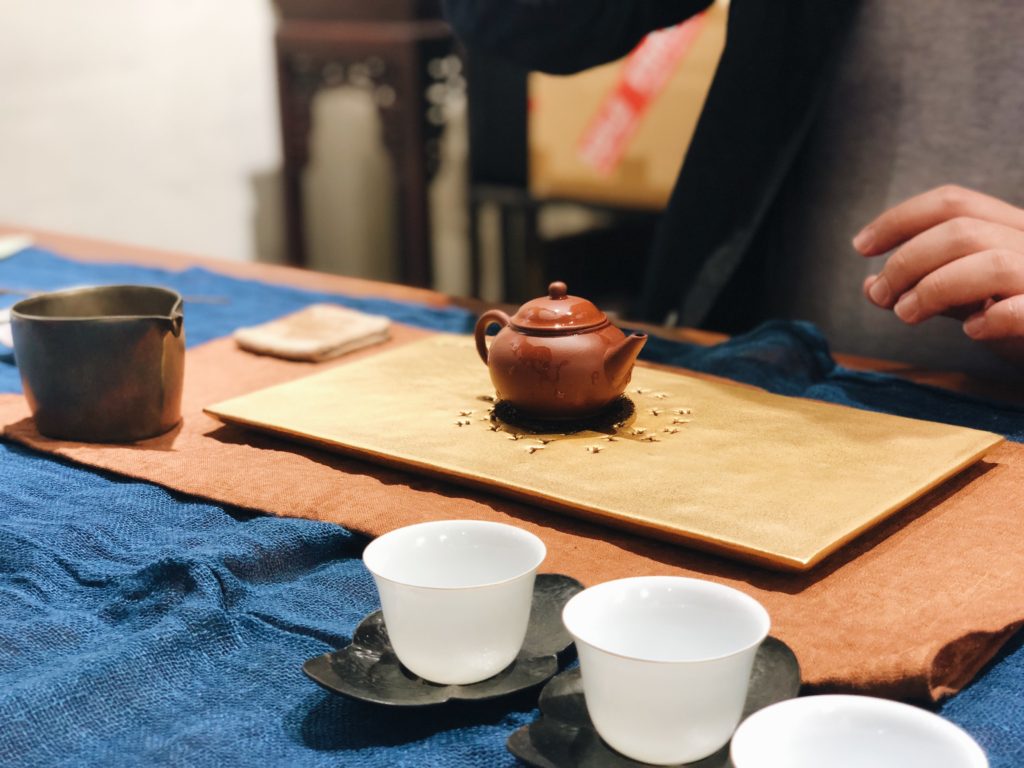
The tray is by a Taiwanese artist called Wang Wen De [1] and it consists of two slabs of ceramic. It’s amazing how he managed to fire them so straight! Since this consists of two pieces, it can hold some water – the water is collected through the hoes, which are actually old musical notations.
The pot is a Yixing Zhuni. We used a different pot for each tea so I don’t remember the specifics, but I know quite a few were from the Qing dynasty – it was pretty amazing to get to try teas brewed with these.
The orange cloth is a persimmon dyed cloth by soma folk [2] and interestingly, it’s going to get darker as it ages and oxidises. The blue cloth is also by them but this will lighten with age.
Tea 1: Lishan Oolong
Lishan is located in central Taiwan and is known for its high mountain oolongs which are fragrant and light. I learnt [3] about why high mountain oolongs are so flavourful: the altitude exposes them to more UV, which causes more aromatics and viscosity to form. This was a clean, light, and sweet tea; very straightforward and a nice start to the series.
Teas 2 and 3: Winter Teas & the Importance of Roasting
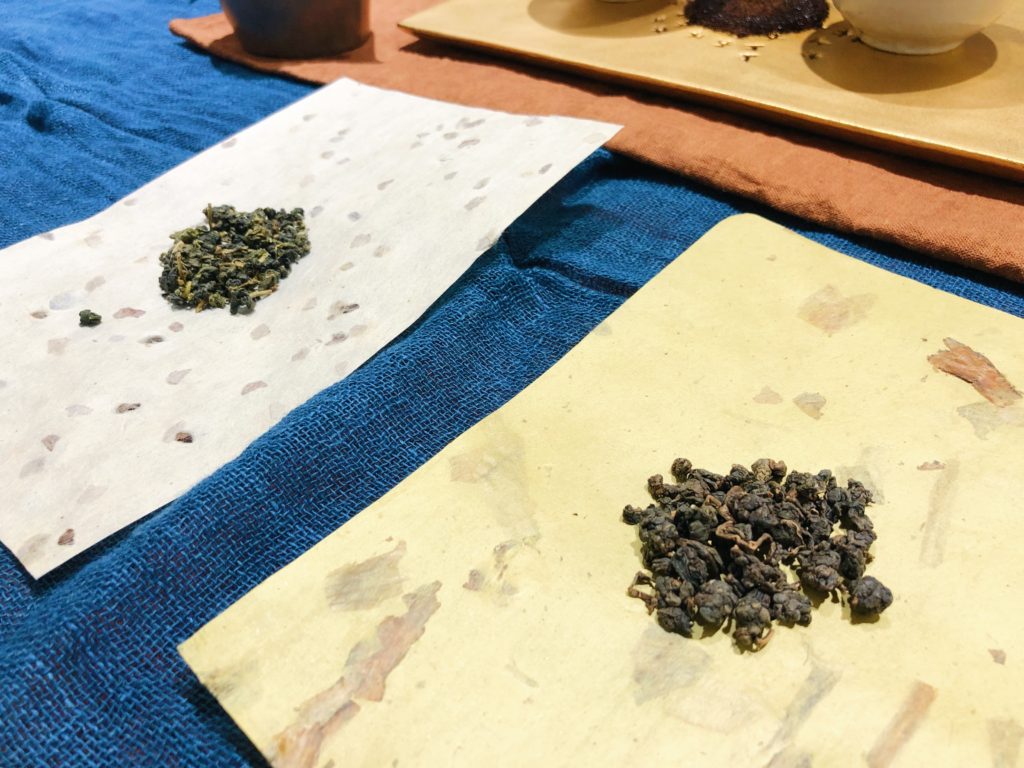
This is not the best picture, but it should be pretty clear that the tea on the left (the long fong xia) is a lot greener than the tea on the right/front. This is because it has a lighter roast and the point of trying these two winter oolongs was to let us experience how the roasting and oxidation levels [4] impact the tea.
The greener Long Fong Xia was very light with a good viscosity. If you roll it about your mouth, you get a creamy, almost gel-like consistency – this sounds a bit weird but it’s pretty obvious when you compare it to the darker winter oolong. Technically, the Long Fong Xia is considered flawless: it’s got no tannins or astringency [5], is sufficiently oxidised, and the roast is fully integrated into the tea. If you look at the spent leaves, they have a texture approaching leather. The tea itself is green and floral.
The darker tea was extremely fruity – I was hit by how intense the fruity notes were as I drank this right after the greener one – but it isn’t as viscous. Here, we learnt about viscosity: it’s not something you can add during the tea processing but is determined by the age, rate of growth, and altitude of the plant. The more organic compounds there are, the more viscous the tea is.
Apart from the discussions on viscosity and what makes a tea technically flawless, Kenny also talked about one big issue with oolongs nowadays: teas are being harvested earlier and earlier, which means they aren’t at their optimal ripeness. Because the tea isn’t ripe enough, it cannot stand up to high oxidation levels. This means the tea is greener and the roast has to be much lighter, which in turn results in vegetal notes that should not be there but are sometimes passed off as a hallmark of high mountain teas.
Teas 4 and 5: Two Dong Ding Oolongs
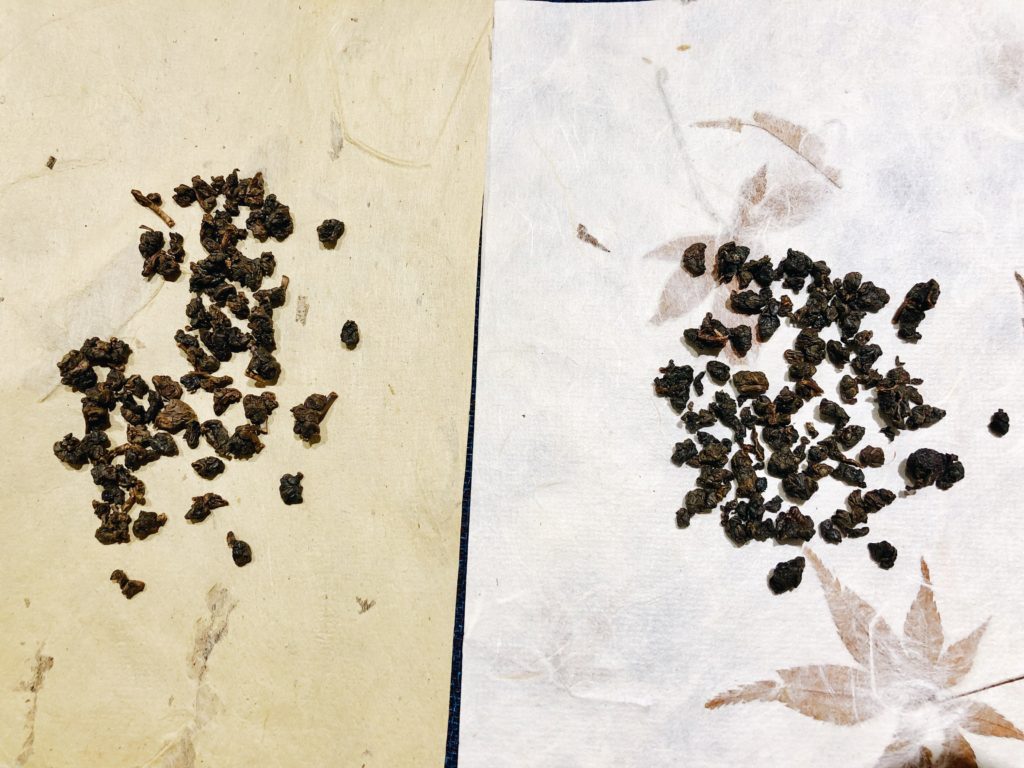
Take a look at these two teas. They’re both Dong Ding oolongs, but the one on the left is 2.5 times more expensive than the one on the right. This may come as a surprise, given that the one on the left has stems sticking out, but you don’t always want perfect oolong balls – by forcing the stems into the ball, you’re compacting it too much and it actually affects flavour.
That said, there are also teas that are not properly made and also have stems sticking out. The key to differentiating between a tea that has been made the traditional way (with stems) and tea that is not made well is to look at the tea balls – a well-made, traditional tea will have rolled the leaves into consistent sizes, while a poorly made tea will be inconsistent.
Even though I mentioned that the tea on the right is considered far too compact, it’s actually a competition-grade tea, so it’s not that bad. Still, the difference between the two teas was so stark I couldn’t believe it. The traditional style tea has so much more flavour than the compact competition grade tea – the competition-grade tea tasted like water by comparison. It really brought home the fact that a good tea master can make a huge difference to the flavour and quality of the tea.
Tea 6: Pouchong
This tea was selected as an example of a traditional oolong with twisted leaves (instead of being rolled into a ball). It’s a light, floral tea with a depth that comes from the fact that it’s a wild tea.
And this is a bit of a digression but we talked a bit about teaware here and I wanted to share what I learnt. I was asking why tea in the West is brewed with larger teapots, given that the practice of tea came from China and that initially, tea and teaware were imported to Europe. Well, Kenny explained that the practice of steeping loose tea started in the Ming Dynasty and at that time, the standard teapot was a lot larger (about 30cm tall and fairly wide). The modern Chinese teapot size only came about during the Qing dynasty. The Ming dynasty was also the time where tea was exported to Europe, which explains why teapots found in the West tend to be larger. This was an eye-opener and showed me how various tea-traditions actually capture tea at different stages of growth – Chado in Japan reflects Song-dynasty tea, the larger teapots in the West are a Ming-dynasty legacy, and the current small Chinese teapots are from the Qing dynasty.
Tea 7: A 2016 Beauty of the East by Jiang Li Qi
This was an extremely rare tea that’s not for sale on most markets. Jiang Li Qi is a tea master when it comes to Beauty of the East and most of the tea he makes is for private buyers. So being able to drink this was an amazing experience and one of the highlights. It’s a pity that I’m not more well-versed with Taiwanese oolongs because I’m sure a bigger base of comparison would help highlight the difference between this tea and another version. Still, I was deeply impressed by the tea – it’s very sweet with honey notes and is extremely smooth with no astringency or tannins.
Tea 8: 野放乌龙 (Ye Fang Oolong)
This last tea was a sort of test for us, to see if we learnt anything. It’s a 野放 (Ye Fang) tea, which means that it was planted but then abandoned for about 50 years before being harvested again. Ye Fang is also a marketing term now, so while it’s pretty interesting, you should also be careful before you buy.
Anyway, to get back to the tea: I noticed the astringency in the tea immediately – interesting but it also distracted me from other qualities of the tea (I get what Kenny was talking about now). The viscosity is not too bad, although it would have been nicer if it was higher and there was a good flavour to the tea. It’s not perfect but it’s definitely very interesting and I enjoyed this.
Experiment 1: Ceramics vs Tenmoku
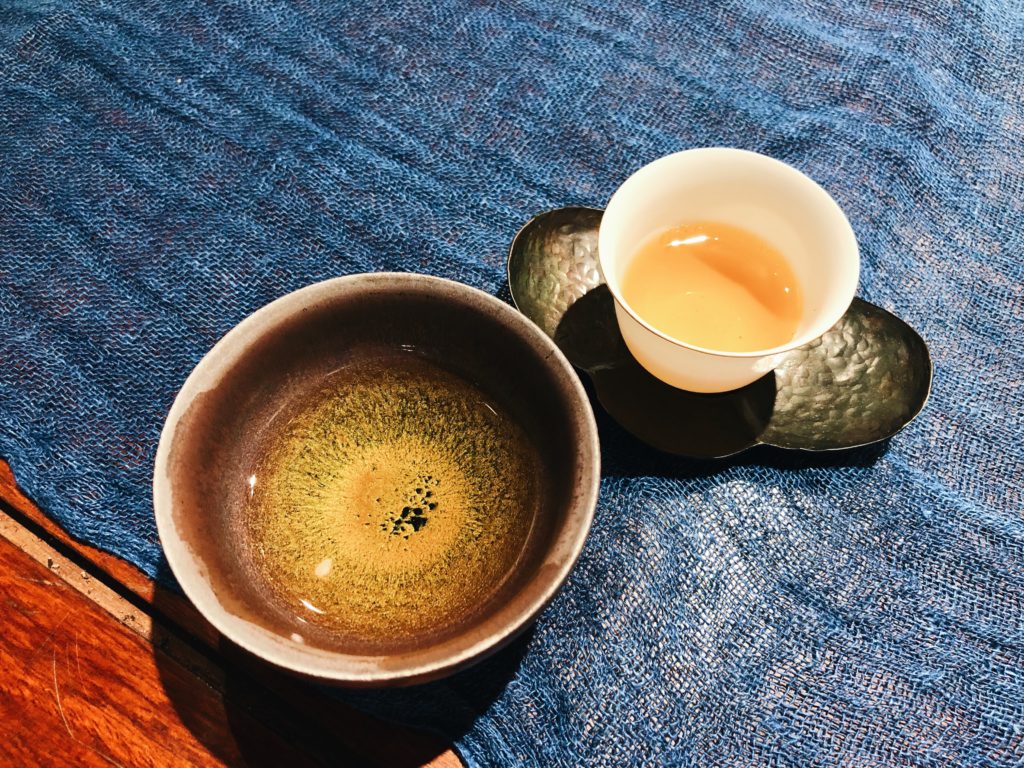
We ended the session with two experiments. The first was to test how different vessels can affect the taste of tea. We tried the same tea in a Tenmoku cup and in a ceramic one. Interestingly, the tea in the tenmoku cup had a bit more of a metallic note on the tip of the tongue but was also rounder and more mellow. By contrast, the tea in the porcelain cup was sharper and more pronounced. I heard that for more astringent or sharper teas, a tenmoku might be prefereable to help mellow it a little.
Experiment 2: The One Hour Steep
After I asked about astringency, Kenny decided to show us why a lack of astringency can be important by steeping the Long Fong Xia for one hour. Yes, one hour. You’d think the tea would be undrinkable, but apart from a strong bitter note at the sides of my mouth, the tea was actually okay. A long steep normally means high astringency, which in turn means the tea becomes undrinkable (at least to me – I like astringency but not in too high a dose) so the fact that I could drink this was a huge shock.
Overall, this was a fantastic workshop. I learnt so much about Taiwanese oolongs and got to try quite a few teas that I wouldn’t be able to get my hands on in normal circumstances. One thing I really appreciated is that despite the fact that Kenny is so well-versed in tea, he’s still very friendly and entertained all our questions – no matter basic they might be. If you don’t already, I’d recommend following him on Instagram for his highly educational posts about tea and teaware. And if you’re interested in attending a future workshop, he normally announces it on his Tea Affairs instagram, which is dedicated to workshop announcements.
Notes
[1] You can find more of his work here
[2] You can find their instagram here and their website here
[3] I took lots of notes but if there are any errors, it’s probably because I was scribbling too fast and mis-wrote something. I don’t think I made any mistakes, but I wanted to put it out here because my handwriting is terrible and even I don’t trust my handwriting completely.
[4] In general, teas darken either due to age or roasting and oxidation. Roasting and oxidation come as a set because if the tea isn’t very oxidised, you can’t roast it too much without losing desirable qualities either. There is a saying called 三红七绿 (three red seven green) that describes the amount of oxidation you’d want.
[5] As someone who quite likes astringency in my black teas, I asked why the lack of astringency is important when you’re considering if a tea is technically flawless. Kenny explained that while astringency can make a tea more interesting and prop up teas that would otherwise feel a bit flat, it shouldn’t be the forefront or too dominant.
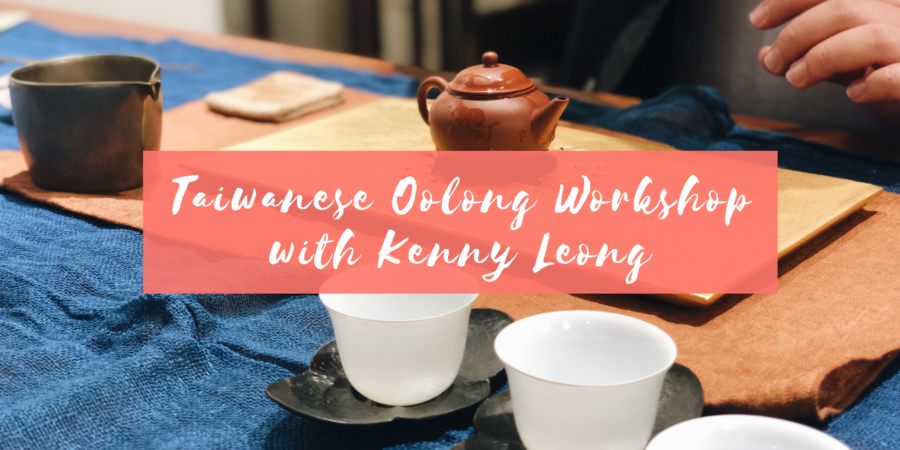
Fascinating post! Thanks for sharing your notes!
Thank you! It’s a bit longer than usual so I’m glad you enjoyed it (: